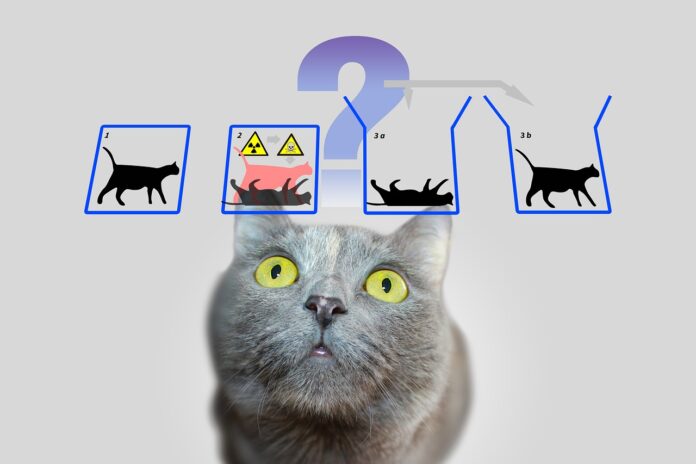In the intricate realm of quantum mechanics, where particles behave in bewildering ways, one interpretation stands as a cornerstone of understanding—The Copenhagen Interpretation. Proposed by Danish physicist Niels Bohr in the early 20th century, this interpretational framework unravels the enigmatic nature of the quantum world and provides a lens through which we can make sense of its perplexing phenomena. In this article, we delve into the intricacies of the Copenhagen Interpretation, exploring its key principles and the enduring impact it has had on the field of quantum mechanics.
Quantum Puzzles: The Need for Interpretation
Quantum mechanics, with its probabilistic nature and wave-particle duality, challenges our classical intuitions and demands a new way of understanding the behavior of particles in the microscopic world. As scientists delved into the quantum realm, it became apparent that a framework was needed to make sense of the quantum puzzles and reconcile them with our classical notions of reality.
Bohr’s Copenhagen Interpretation: Embracing Complementarity
At the forefront of this interpretational framework was Niels Bohr’s Copenhagen Interpretation. According to Bohr, the quantum world is fundamentally different from the classical world, and our traditional concepts and language fail to capture its essence accurately.
Bohr emphasized the principle of complementarity, which states that different experimental setups and measurements reveal different aspects of a quantum system, and no single experiment can fully capture its complete picture. This principle recognized the inherent limitations of our classical intuitions in describing the quantum realm.
Wave-Particle Duality: Embracing Both Sides
A central concept within the Copenhagen Interpretation is wave-particle duality—the idea that particles can exhibit both wave-like and particle-like characteristics depending on how they are observed or measured. Bohr emphasized that particles are not strictly waves or particles but rather possess properties that are complementary to each other.
For instance, in the famous double-slit experiment, electrons can behave as particles when measured at the screen, creating distinct spots. However, when the experiment is set up to observe the interference pattern, electrons exhibit wave-like behavior. Bohr’s interpretation embraced this duality, acknowledging that depending on the experimental context, particles can manifest in different ways.
Measurement and Observer Effect: The Role of Consciousness
The Copenhagen Interpretation also addresses the role of measurement and the observer effect in quantum mechanics. According to Bohr, the act of measurement collapses the quantum state of a system, forcing it to “choose” a particular outcome. This collapse is probabilistic in nature, with the probability determined by the wavefunction of the system.
Critically, Bohr emphasized that it is the interaction between the quantum system and the measurement apparatus that brings about the collapse. He argued that consciousness or the presence of an observer is not a necessary ingredient for the measurement process, contrary to popular misconceptions.
Uncertainty and Probability: The Inherent Nature of Quantum Mechanics
The Copenhagen Interpretation acknowledges the intrinsic uncertainty and probabilistic nature of quantum mechanics. It recognizes that, at the fundamental level, predictions can only be made in terms of probabilities rather than deterministically.
Bohr argued that it is crucial to accept this inherent uncertainty and embrace the probabilistic framework of quantum mechanics. Instead of searching for hidden variables or deterministic explanations, the interpretation emphasizes the use of probability distributions to describe and understand the behavior of quantum systems.
Implications and Controversies
The Copenhagen Interpretation has played a significant role in shaping our understanding of quantum mechanics and has been instrumental in the development of the field. However, it is not without its share of controversies and debates.
Critics argue that the Copenhagen Interpretation leaves certain aspects of quantum mechanics unexplained, such as the nature of the collapse of the wavefunction and the role of measurement. Some physicists propose alternative interpretations, such as the Many-Worlds Interpretation or the Pilot Wave Theory, which seek to address these gaps.
Nevertheless, the Copenhagen Interpretation’s enduring influence cannot be overstated. It provided a framework that allowed scientists to make predictions and calculations that align with experimental observations. It emphasized the limitations of classical intuitions and laid the foundation for further developments in quantum mechanics.
A Paradigm for Quantum Reality
Niels Bohr’s Copenhagen Interpretation offered a paradigm for understanding the quantum world—one that embraced complementarity, wave-particle duality, and probabilistic behavior. It recognized the intrinsic limitations of classical thinking when applied to the quantum realm and provided a language to describe and predict the behavior of quantum systems.
The Copenhagen Interpretation has been instrumental in advancing our understanding of quantum mechanics and has shaped the way we approach and explore the mysteries of the microscopic world. It remains a cornerstone of quantum theory, driving scientific inquiry and inspiring new generations of physicists to unravel the enigmas that lie at the heart of quantum reality.
As we continue to unravel the intricacies of the quantum world, the Copenhagen Interpretation serves as a reminder of the profound and elusive nature of quantum mechanics. It challenges us to question our classical intuitions, embrace the uncertainties, and venture deeper into the awe-inspiring realm where particles dance in waves of probability, forever changing our understanding of the universe.




